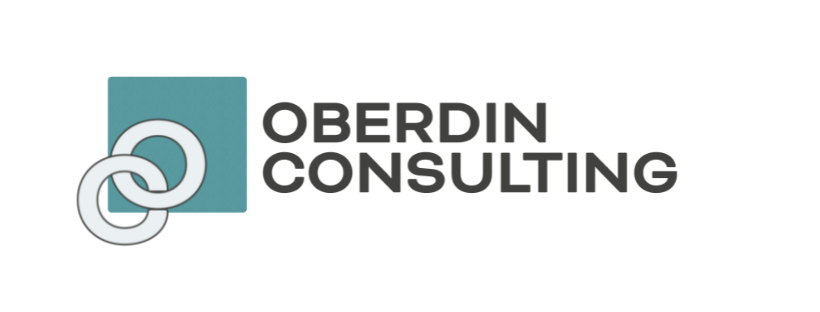How to keep showing up (even just a little bit) when things spiral.
It has happened to all of us - things get busy, our work piles up, events start stacking high on our calendar or life starts lifting - and our marketing takes a back seat.
While this is especially true of my friends in the “Teams of None” category (orgs with no communications people, soloists, freelancers, or volunteer run organizations), I’ve also seen it happen with my small teams friends, especially when they lose a team member.
Things fall off, and marketing can often be the first thing to go. So let’s talk about it.
First, let’s acknowledge that it is easy to say “I’ll deal with everything that’s on fire now, and I’ll think about my marketing later.”
So what's the problem with "I'll deal with it later?"
“Later” turns into next week, next month… and eventually, you feel you’ve accomplished nothing in 6 months.
I’ve been there. We’ve all been there. (See: Every marketer I’ve ever known not doing their own marketing).
But here's the thing: even when everything else feels like a mess, there are small things you can do to make sure people remember you're still around. I refer to these things as my “minimums.”
What’s a Minimum?
I first learned about “minimums” in the fitness world – basically, the #1 non-negotiable thing that you do each day to keep yourself going forward.
These are usually small, easily achievable things. It’s not “Walk 3 miles every day,” or “Do an hour of yoga daily!” it’s “take a 5-minute walk” or “stretch at your desk.”
Ever since I’ve had kids though, the minimum is less “get a walk in” and more “make sure the kids have clean underpants” (because the worst feeling in the world is being told at 6 am on a Monday that there are none to be had. Ask me how I know.)
We don’t have to get ALL the laundry done all the time - sometimes, all we need are clean underpants.
Minimums aren’t fancy, but they help you get the job done and keep you moving forward.
Step 1: What’s the thing that HAS to happen?
Every business & organization has some communication pieces that need to happen, or they collapse into a heap. (This is the “clean underpants” part of the equation).
For me, the thing that must happen is client communication. From Monday updates to monthly check-ins, the thing that never stops is making sure I talk to my clients. Even if I stop doing social or don’t send a newsletter for a while, my clients will always know I’m here.
So, ask yourself: What’s the communication piece that absolutely has to happen, even when everything else drops?
It might be communication with volunteers, or staying in touch with your core partners, your board, or even just making sure events go up on your website.
And let’s be clear: It is usually the LEAST FANCY part of your communications plan. (There’s nothing fancy about Monday updates, but they are the backbone of my client communications).
If you are seriously treading water – this is it. This is your stopping point. Do your minimum for as long as you need to, hold on to this newsletter, and come back to it later.
If you are getting ready to come out of a hectic period (or are planning for a future one), here are two other things to think about:
Step 2: Easing your way back in.
Coming out of a hectic period can be pressure filled – you want to make up for not showing up as often or in the ways you might like. So sometimes, we try to overcompensate. Instead of going from zero to 60, though, give yourself some grace and ease your way back in.
Find the easiest channel to pick back up, and start slow.
Earlier this year, I had a hectic period, and I started easing back in with LinkedIn. I didn’t post every day, but I did try to show up by:
Commenting on posts I like
Sharing something useful (either my own or a friend’s post) now and then
Keeping tabs on my network
For you or your organization, it could be different - be adding to your Instagram stories, or sending a short email to your newsletter list, or updating your website.
Pick one. Keep it simple. This way, you don’t have to do a big “I’m BAAAAACK” (only to get overwhelmed and hide again for another 3 months).
Slow & steady wins the race.
Step 3: Learn to love a layered approach
As you can, layer your other communications back in, as time and bandwidth allow.
You may start your next most important channels first, or you may focus on cross-channel communications for event happening soonest.
The key is to not add in everything, too much, too fast. You want to make sure you don’t overburden yourself and have to do this all over again.
FINALLY make a note in your calendar, or whatever materials you use for year-end reviews & planning, when you had a difficult time and had to resort to your minimums. If you notice that, year over year, May & June are hard, or September & October need minimum focus only, that's something to include in future planning.
We can't always plan chaos, but we can work with it.
TLDR:
Your marketing minimums don’t have to be big or flashy. They are usually the least flashy thing you do.
Let the rest of your stuff wait.
When things settle down, pick up your marketing actions one by one until you are back to normal.
Make a note of when it happens so it can help in future proofing yourself against...yourself.
I hope this gives you permission to breathe + a little structure when everything feels like too much.

